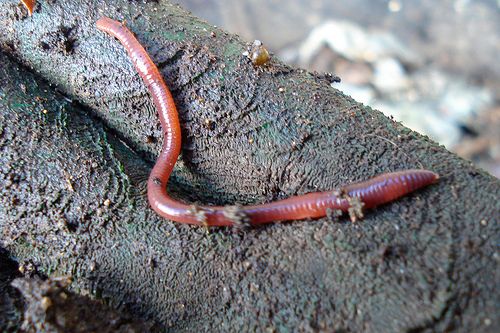Red Wiggler Worms offer for sale - Lasting Waste Management Solution
Red Wiggler Worms Demystified: Opening the Tricks of Vermiculture for Greener Living and Nutrient-Rich Soil
In the world of sustainable techniques for enhancing dirt high quality and promoting eco-conscious living, red wiggler worms play a pivotal yet frequently neglected role. Red Wiggler Worms. Understanding the intricacies of caring for these worms, optimizing their environment, and harnessing their spreadings can lead to a greener lifestyle and much healthier soil for plants to grow.
The Function of Red Wiggler Worms
Red Wiggler worms play an essential function in composting systems by successfully breaking down natural issue into nutrient-rich spreadings. These voracious eaters consume a selection of organic products, such as kitchen scraps, lawn waste, and paper items. As they feed, the worms' gastrointestinal procedures break down the raw material into a penalty, dark, and nutrient-dense material called worm spreadings or vermicompost.
The castings generated by Red Wiggler worms are highly helpful for dirt health and wellness and plant growth. They are abundant in crucial nutrients like phosphorus, nitrogen, and potassium, which are essential for supporting healthy plant advancement. Additionally, worm castings have beneficial microorganisms and enzymes that help improve dirt framework, increase water retention, and boost nutrient uptake by plants.
Benefits of Vermicomposting

Furthermore, vermicompost, the nutrient-rich end item of vermicomposting, serves as an excellent natural plant food and soil conditioner. It enhances soil framework, improves dirt aeration, and increases dirt wetness retention. These homes add to healthier plants with more powerful root systems and far better resistance to insects and conditions. Vermicompost also improves the soil with crucial nutrients like phosphorus, nitrogen, and potassium, advertising plant growth and total soil fertility.
In addition, vermicomposting supports sustainable gardening practices by supplying a chemical-free and natural alternative to artificial plant foods. Red Wiggler Worms. This eco friendly approach not only enriches the soil however additionally aids reduce reliance on dangerous chemicals, advertising a greener and extra lasting way of gardening
Setting Up a Worm Bin
When establishing a worm bin for vermicomposting, appropriate configuration is critical to guarantee the success of the composting process. The initial step in establishing up a worm container is choosing an appropriate container. This can be a plastic bin or wooden box that provides enough space for the worms to relocate about and has appropriate drain holes to avoid waterlogging. Next, a bedding product such as shredded paper, cardboard, or coconut coir must be added to the bin. This bedding provides a comfy setting for the worms and assists preserve wetness levels.
After including the bed linen, present the red wiggler worms to the container. It is recommended to begin with a little number of worms and gradually raise as they increase. The worms ought to after that be supplied with food scraps such as fruit and vegetable peels, coffee premises, and eggshells. It is essential to stay clear of adding meat, dairy, oily, or salted foods to stop attracting parasites and developing unpleasant smells.
Frequently monitor the moisture degrees and temperature level in the worm container to guarantee optimal problems for the worms. With appropriate configuration and maintenance, the worm bin will successfully convert natural waste into nutrient-rich compost for your plants and yard.
Gathering Worm Spreadings
To effectively accumulate nutrient-rich worm castings from your vermicomposting system, a methodical harvesting technique is essential. When it comes time to gather the worm castings, there are a few crucial actions to comply with to make sure an effective procedure.

Troubleshooting Common Issues
Identifying and addressing usual difficulties that might develop during the vermicomposting process is crucial for preserving a healthy and effective worm bin. One usual concern that vermicomposters encounter is overfeeding. Including excess food scraps can result in an accumulation of dampness and acidity in the worm container, possibly damaging the worms. To stop this, feed the worms in small amounts, ensuring that the food scraps are effectively broken down prior have a peek at this site to including much more. Another concern is undesirable smells originating from the worm bin. Foul smells indicate anaerobic conditions, normally triggered by overwatering or insufficient ventilation. To fix this, adjust the moisture degrees by including dry bed linens products like shredded newspaper or cardboard and boost aeration by transforming the bed linen regularly.
Furthermore, if the worm populace is declining or the worms show up unhealthy, maybe because of ecological stressors such as severe temperatures or pH degrees. Checking these aspects and making necessary modifications is important for the health of the worms. By repairing these common issues without delay, vermicomposters can guarantee a smooth and successful vermicomposting process while preserving a flourishing worm population.

Final Thought
In verdict, red wiggler worms play an important duty in vermiculture by damaging down natural matter right into nutrient-rich soil. Setting up a worm bin is necessary for effective vermiculture, and harvesting worm castings supplies important garden compost for horticulture.
As they feed, the worms' digestion processes damage down the organic matter right into a penalty, dark, and nutrient-dense material known as worm spreadings or vermicompost.
The Red Wiggler Worms spreadings produced by Red Wiggler worms are highly beneficial for dirt wellness and plant growth. Adding excess food scraps can lead to a buildup of moisture and acidity in the worm bin, potentially harming the worms.Furthermore, if the worm populace is decreasing or the worms show up harmful, it could be due to environmental stress factors such as extreme temperature levels or pH levels. Establishing up a worm bin is vital for successful vermiculture, and collecting worm castings gives important garden compost for gardening.